Tokyo Station Shinkansen Guide: Map, Platforms, Luggage Storage and Dining
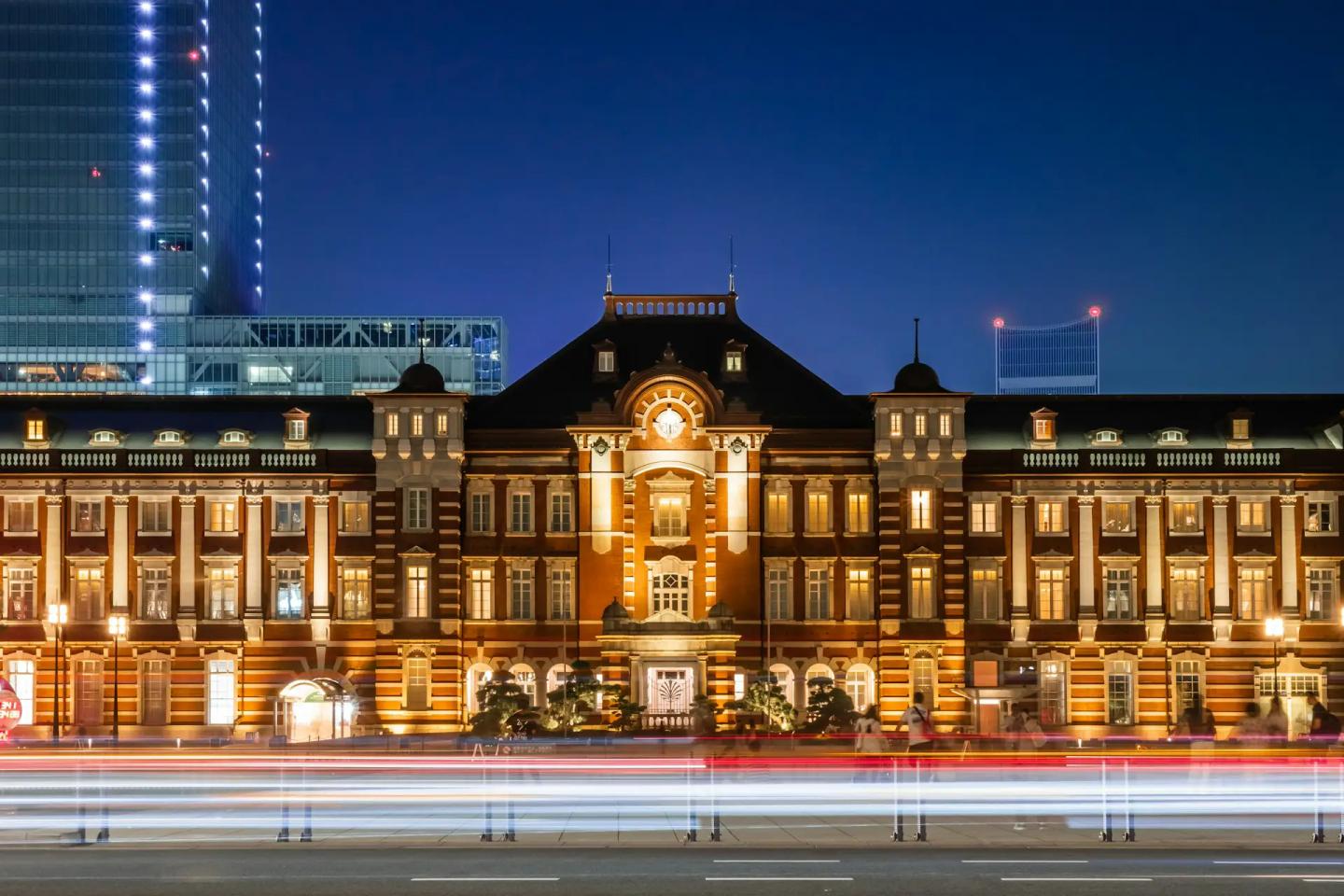
Tokyo Station stands as Japan's most important railway terminal, connecting millions of travelers to destinations across the country every day. Whether you're catching the famous Shinkansen, exploring local neighborhoods, or heading to the airports, this massive station serves as your gateway to unforgettable Japanese adventures.
This comprehensive guide will help you navigate Tokyo Station with confidence, from booking your first Shinkansen ticket and connecting to local trains to enjoying authentic Japanese cuisine and shopping for character goods.
Tokyo Station Overview
Tokyo Station serves over 800,000 passengers daily and connects Japan's major cities through its extensive railway network. From here, you can reach Osaka in under three hours, visit Mount Fuji, or explore Tokyo's diverse neighborhoods.
The station also houses one of Japan's largest underground shopping and dining complexes, making it a destination in itself.
Station Map and Navigation Tips

Tokyo Station spans multiple levels and covers a vast area. The main concourse sits at ground level, with Shinkansen platforms located at the ground or slightly elevated levels and local train platforms both above and below ground.
Digital maps and English signage help foreign visitors navigate. Look for the distinctive color-coded signs that match different railway lines. Green signs indicate JR Yamanote Line, blue represents Keihin-Tohoku Line, and orange marks the Chuo Line.
Tokyo Station Entrances: Yaesu vs. Marunouchi
Tokyo Station has two main entrances—Marunouchi to the west and Yaesu to the east—each offering different advantages based on your destination.
Marunouchi Side

The Marunouchi entrance (west side) faces the historic red-brick station building and provides a scenic walking route toward the Imperial Palace. It also connects to some Shinkansen platforms, but the route involves navigating several corridors, making it a longer walk compared to Yaesu
Yaesu Side

The Yaesu entrance (east side) directly connects to the dedicated Shinkansen South and North Transfer Gates, offering the shortest and clearest access to bullet train platforms via clear signage. It also provides access to Yaesu Shopping Mall (Yaesu Chikagai) and the newly opened Tokyo Midtown Yaesu complex just outside the station
Shinkansen, JR Lines, and Subways
Tokyo Station operates multiple transportation systems under one roof. The JR network includes both local lines and the famous Shinkansen. The station connects to several Tokyo Metro subway lines through underground passages, though these technically operate from nearby stations.
The Shinkansen platforms handle trains bound for major destinations including Osaka, Kyoto, Hiroshima, and northern cities like Sendai and Aomori. Local JR lines connect you to popular areas such as Shinjuku, Shibuya, and Tokyo Disneyland.
Taking the Shinkansen from Tokyo Station
The Shinkansen offers the fastest way to travel between major cities in Japan. Tokyo Station Shinkansen services serve as the starting point for most bullet train lines across the country.
Where to Find the Shinkansen Platforms

Tokyo Station Shinkansen platforms are clearly separated from local train areas. Follow signs marked "新幹線" (Shinkansen) in both Japanese and English.
Platforms 14-19 serve the Tokaido and Sanyo Shinkansen (blue signs) heading to Nagoya, Kyoto, Osaka, and beyond. Platforms 20-23 handle the Tohoku, Joetsu, and Hokuriku Shinkansen (green signs) traveling to northern destinations like Sendai and Kanazawa.
For detailed step-by-step instruction, check out our boarding guide. This guide covers everything from finding your platform to locating your exact car and seat.
READ MORE: How to Get on the Shinkansen at Tokyo Station: Step-by-Step Guide | Japan Bullet Train
Seat Types and Ticket Options
Shinkansen trains offer four seat types to suit different comfort levels and budgets:
- Unreserved Seat: Available on a first-come, first-served basis in designated cars. This is the most economical option and ideal for off-peak travel. You can choose any open seat upon boarding.
- Reserved Seat: Guaranteed seating with your booking, providing peace of mind during busy periods like Golden Week and summer holidays.
- Green Reserved Seat: Considered the "business class" of Shinkansen. Green Cars offer more spacious seating, deeper recline, and complimentary amenities like blankets and beverages. These seats are reserved only.
- GranClass Seat: GranClass is the "first class" of Shinkansen, available only on select Hokuriku and Tohoku lines. It features wider 2+1 seating, in-car meals, and dedicated service similar to airline first class.
Buying Tickets with Japan Bullet Train
Japan Bullet Train offers the most convenient way for foreign visitors to book Shinkansen tickets online. This service specifically caters to international travelers and tourists living in Japan.
The booking process is straightforward. After selecting your departure station, destination, and travel date online, you'll receive a QR code via email. Take this QR code to Tokyo Station, where you can exchange it for your paper ticket at designated machines or service counters.
This system eliminates language barriers and long queues at ticket counters. The service supports multiple languages and provides customer support via phone, making it ideal for first-time visitors to Japan.

JR Pass and Shinkansen Use at Tokyo Station
The Japan Rail Pass (JR Pass) offers unlimited access to most JR trains throughout Japan. Understanding how to use your JR Pass for Tokyo Station Shinkansen services can save you time and money during your travels.
Can You Use JR Pass Through Tokyo Station's Shinkansen Gates?
Yes, you can use your JR Pass to enter Tokyo Station's Shinkansen area. Present your physical JR Pass and reserved seat ticket (if applicable) to the station staff at the manual gate next to the automatic ticket gates. You cannot use the automatic ticket gates with a JR Pass.
Does JR Pass Work on All Shinkansen Lines from Tokyo Station?
The JR Pass covers most Shinkansen services departing from Tokyo Station:
Covered with no extra charge
- Tokaido Shinkansen (to Nagoya, Kyoto, Osaka): Hikari and Kodama trains are fully covered by your JR Pass.
- Tohoku, Joetsu, and Hokuriku Shinkansen (to destinations like Sendai, Niigata, and Kanazawa): All trains on these lines are included with your pass.
Partially covered
Nozomi and Mizuho trains (the fastest services on Tokaido and Sanyo lines) are not fully covered by the JR Pass. However, JR Pass holders can now ride these trains by purchasing a special supplement ticket at Tokyo Station. This supplement has a fixed fee regardless of seat class, making it a convenient option for travelers who prefer the fastest service.
Where to Exchange Your JR Pass at Tokyo Station
You can exchange your JR Pass voucher at the JR East Travel Service Center, located outside the Yaesu Central Exit. This center provides:
- JR Pass exchange and activation
- Reserved seat reservations
- Assistance from English-speaking staff
Once your pass is activated, you can make additional seat reservations at any of the JR Ticket Office (Midori no Madoguchi) throughout Tokyo Station. You can also use reserved seat ticketing machines, which support multiple languages.
Local Trains and Subways at Tokyo Station
Beyond the Shinkansen, Tokyo Station connects to an extensive network of local trains and subway lines that can take you anywhere in the metropolitan area.
JR Local Lines for Popular Tourist Destinations

- Shinjuku, Shibuya, and Harajuku: The JR Yamanote Line forms Tokyo's circular railway, connecting major stations including Shinjuku, Shibuya, and Harajuku. This line operates every few minutes throughout the day and provides access to most tourist destinations within central Tokyo.
- Tokyo Disneyland: Take the JR Keiyo Line directly from Tokyo Station to Maihama Station. The journey takes about 15 minutes with no transfers required.
- Mount Fuji: For the Lake Kawaguchi area, take JR trains from Tokyo Station to Otsuki, then transfer to the Fujikyu Railway to Kawaguchiko. For the Shizuoka side, take the JR Tokaido Line from Tokyo Station to Kozu, then transfer to the JR Gotemba Line.
Accessing the Tokyo Metro Lines Nearby

While Tokyo Metro lines don't directly serve Tokyo Station, you can access them through underground walking passages. Otemachi Station connects to multiple Metro lines including Chiyoda, Hanzomon, Marunouchi, and Tozai lines.
The underground passages feature shops, restaurants, and clear directional signage. During rainy weather, these passages allow you to travel between different transportation systems without getting wet.
Airport Access from Tokyo Station
Tokyo Station provides convenient access to both of Tokyo's major airports, making it an ideal starting point for international travelers.
How to Get to Narita Airport from Tokyo Station
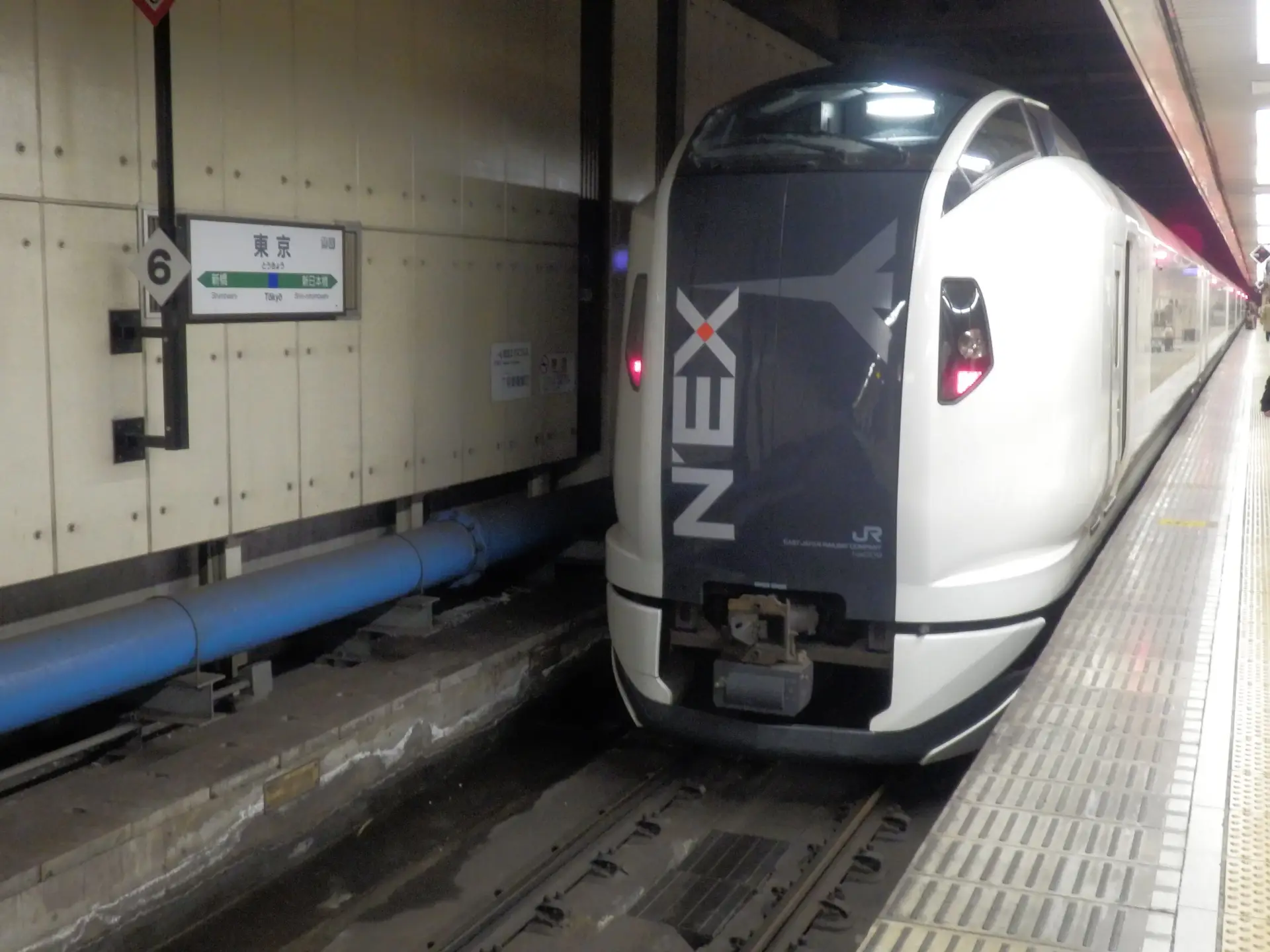
The Narita Express (N'EX) offers direct service from Tokyo Station to Narita Airport. These comfortable trains feature large luggage storage areas and take approximately 60 minutes to reach the airport. Trains depart every 30 minutes during peak hours.
You can also take the JR Sobu Line Rapid to Narita Airport, which costs less but takes longer and requires a transfer. For budget-conscious travelers, this option provides good value while maintaining reasonable travel times.
How to Get to Haneda Airport from Tokyo Station
Reaching Haneda Airport requires a combination of trains. Take the JR Yamanote Line or Keihin-Tohoku Line to Hamamatsucho Station, then transfer to the Tokyo Monorail. The total journey takes about 30 minutes.
Alternatively, take the JR Yamanote Line to Shinagawa Station and transfer to the Keikyu Line, which provides direct access to Haneda Airport. Both routes offer frequent service throughout the day.
Luggage and Lockers at Tokyo Station
Managing luggage at Tokyo Station becomes much easier when you know your options for storage and transport.
Coin Lockers: Sizes, Locations, and Availability
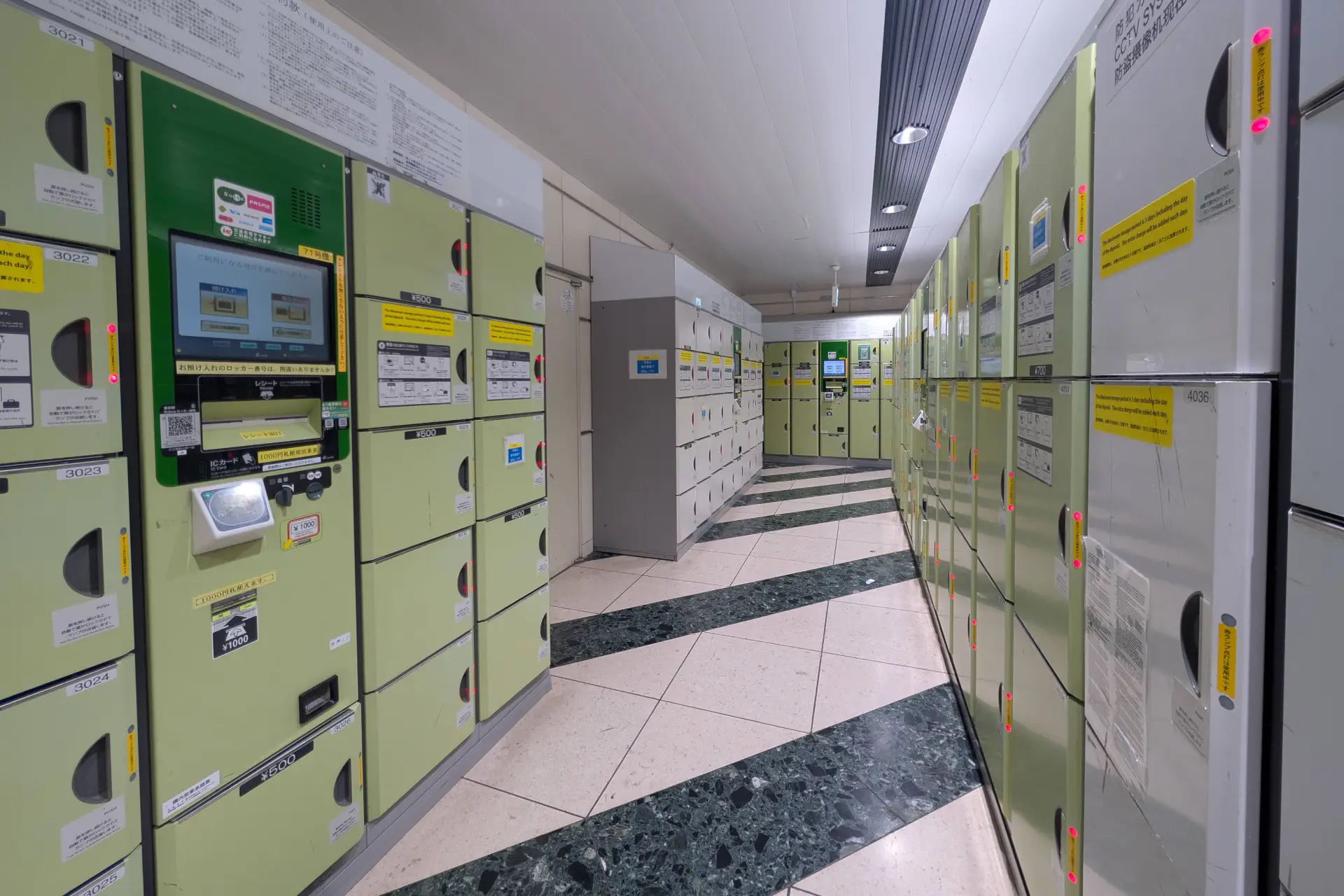
Tokyo Station houses over 1,500 coin lockers in various sizes. Small lockers accommodate day packs and shopping bags, medium lockers fit carry-on luggage and small suitcases, and large lockers can hold large suitcases or multiple bags.
Popular locker locations include:
Outside the gates:
- Near the Yaesu North Exit, close to the Shinkansen ticket gates
Inside the gates:
- Near the Marunouchi Central Exit
- Around the Marunouchi Underground Central and North Exits
- Near the B1-level GRANSTA area
- Along the Keiyo underground passage
- Beside the Sobu Line Rapid platforms on the deep underground (B4) level
During busy periods, lockers fill up quickly, especially in easily accessible areas. It’s recommended to store your luggage early in the day, or consider lockers in less crowded zones such as the Sobu Line Rapid area.
Most lockers accept both coins and IC cards like Suica or Pasmo.
Luggage Storage Services for Large Suitcases
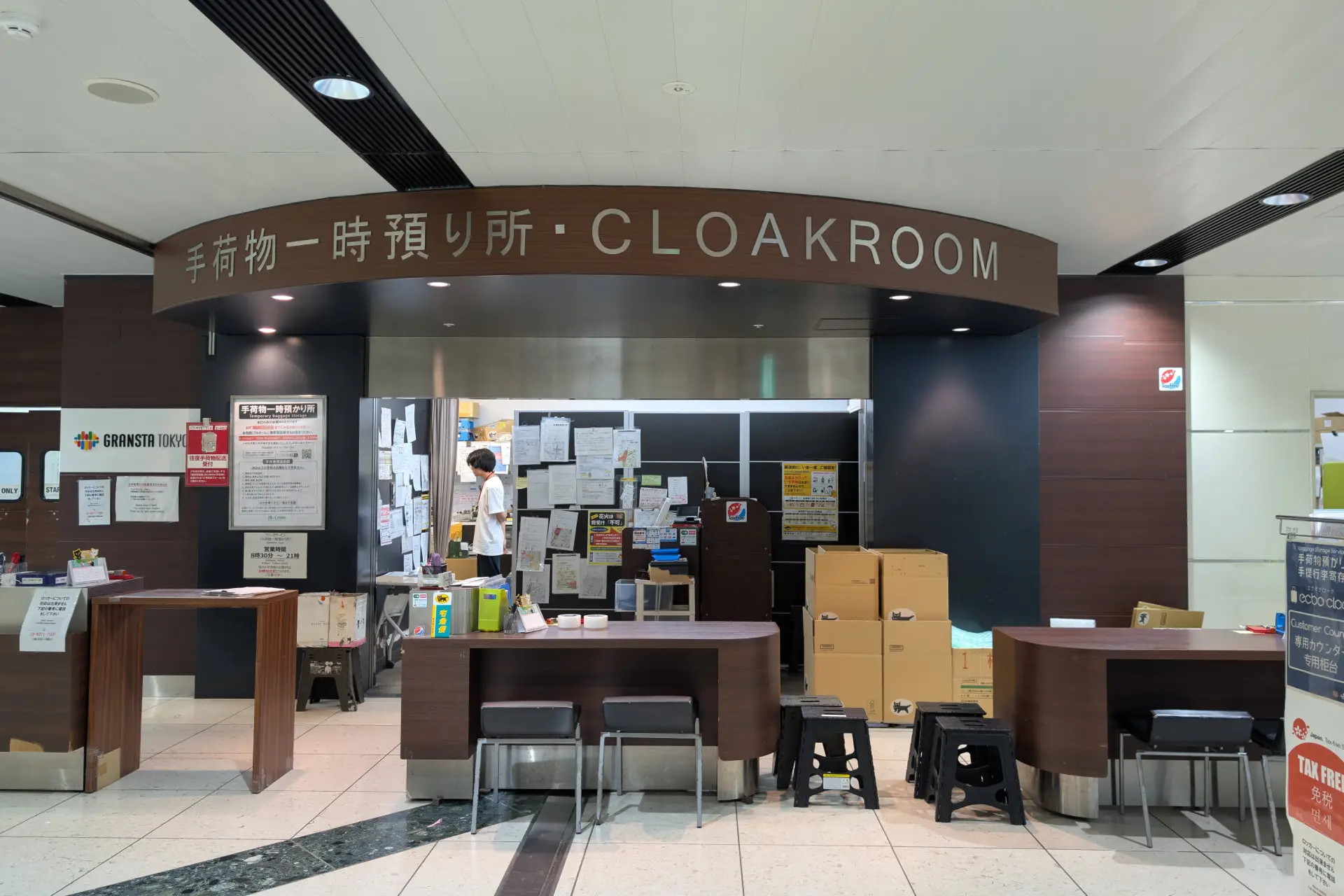
For oversized luggage or when coin lockers are full, Tokyo Station offers several staffed luggage storage services inside the gates. These services can handle large suitcases, sports equipment, and oddly shaped items that won’t fit in standard lockers.
Main locations include:
- Near the Shinkansen South Transfer Gate (inside the Shinkansen area)
- The Cloak Service inside GRANSTA, available on the B1 level
- Near the GRANSTA Underground North Gate
These storage counters provide same-day service and are staffed by attendants who can assist in multiple languages. Fees vary depending on the size and duration of storage, but these services offer added security and convenience, especially for travelers carrying valuable or bulky items.
Foreign Traveler Support
Tourist Information Center

Tokyo Station and its surrounding area offer several official tourist information centers that support international travelers in English, Chinese, Korean, and other languages. These centers assist with travel planning, ticket guidance, and sightseeing advice for Tokyo and beyond.
- JR EAST Travel Service Center Tokyo: Located just outside the Marunouchi North Exit, this center supports JR ticket purchases, Japan Rail Pass exchanges, sightseeing guidance, currency exchange, and baggage services. Staff provide assistance in English, Chinese, Korean, and Japanese.
- Tokyo City i: Located in the basement of KITTE near the Marunouchi South Exit, this multilingual center offers nationwide travel information, cultural experience programs on weekends and holidays, and pamphlets for Tokyo and other regions.
- TIC TOKYO: Just a 1-minute walk from the Nihombashi Exit, this JNTO- and Tokyo Metropolitan Government-certified center provides multilingual guidance, digital travel information, and free Wi-Fi in a welcoming setting.
- JNTO Tourist Information Center: Operated by the Japan National Tourism Organization, this center in the Shin-Tokyo Building (about 7 minutes from the Marunouchi South Exit) offers nationwide tourist information, brochures and maps, and cultural experiences such as kimono and origami (available on select days).
Throughout Tokyo Station, you can also find smaller English-language information counters.
Free WiFi, Pocket WiFi, and eSIM Options
Free WiFi is available at Tokyo Station. Look for 'JR-Central_FREE', '#Yaechika_Free_Wi-Fi_Street', or 'TOKYO FREE Wi-Fi' depending on your location within the station.
For reliable connection during your entire Japan journey, Japan Wireless rental provides unlimited data coverage. Japan Wireless eSIM is an excellent alternative for travelers who prefer not carrying an additional device
ATMs & Currency Exchange Services
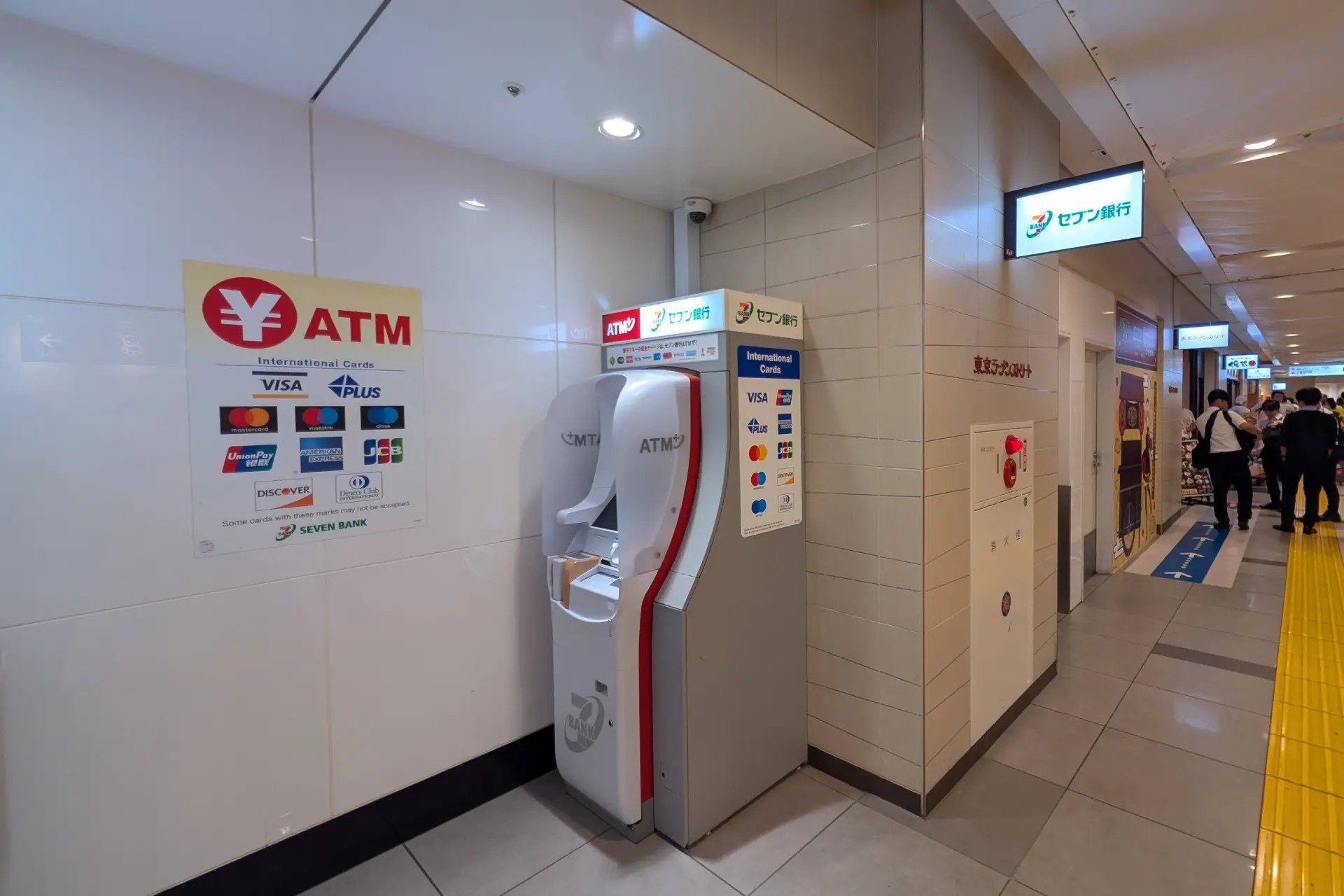
International ATMs are located throughout Tokyo Station, including near the north and south entrances, inside GRANSTA, and in the Tokyo Station Ichibangai shopping area. Most machines accept foreign-issued cards and offer English language support.
Currency exchange services are available at several points around the station. The counter near the Marunouchi Central Exit is especially easy to find and convenient for first-time visitors. Additional exchange services may also be located near the Yaesu side and inside commercial areas within the station complex.
Where to Eat at Tokyo Station
Tokyo Station houses one of Japan's most extensive station food complexes, offering everything from quick snacks to elaborate meals.
Tokyo Station Ichibangai
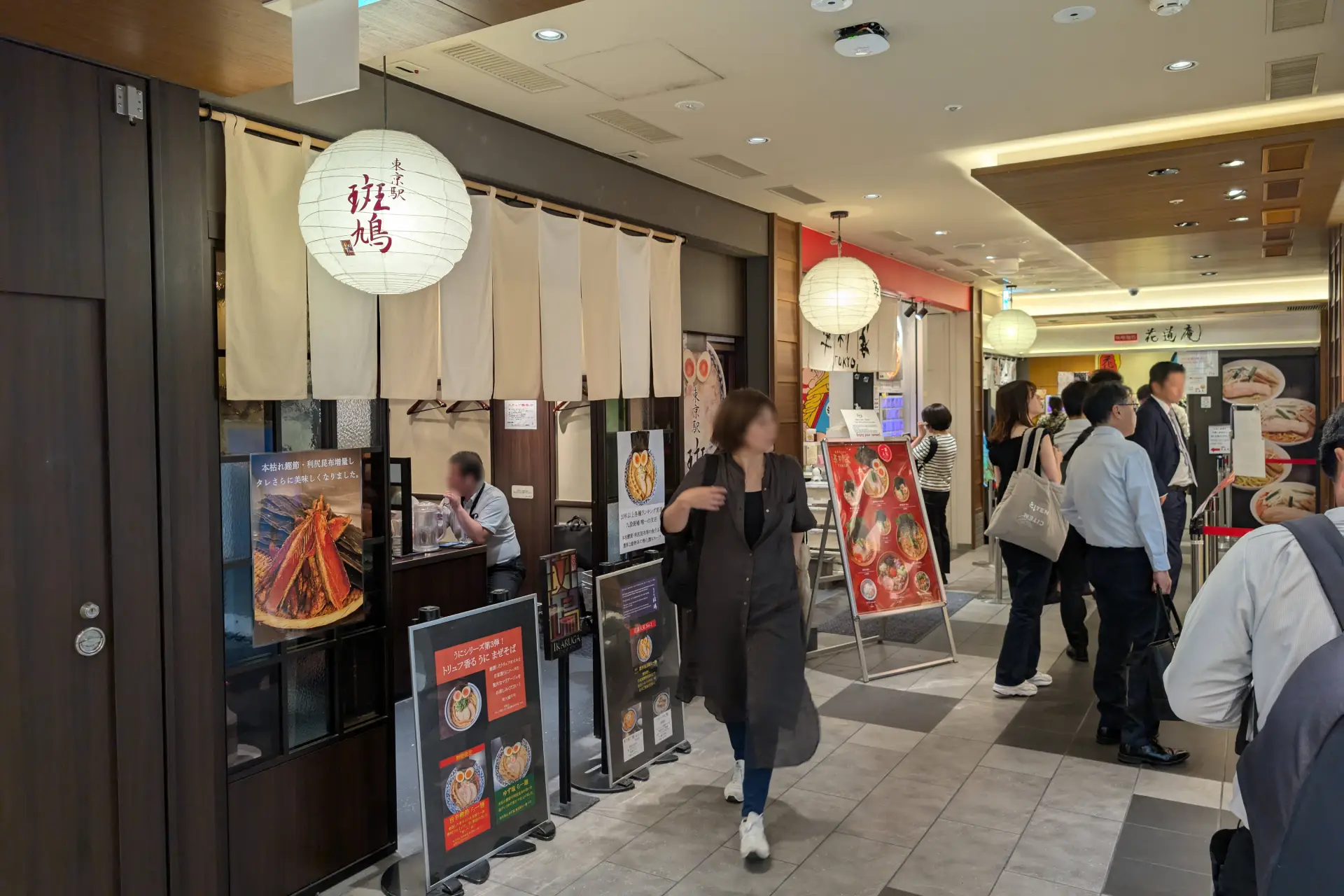
Tokyo Station Ichibangai spans the underground levels and connects both sides of the station. This shopping and dining complex features over 100 restaurants, cafes, and food shops representing cuisines from across Japan.
Ramen Street vs. Ramen Yokocho

Tokyo Station Ramen Street houses eight renowned ramen shops in a dedicated corridor within Ichibangai. Each shop specializes in different regional ramen styles, from rich tonkotsu broth to light shio varieties.
Tokyo Ramen Yokocho is a separate ramen zone in the nearby Yaesu Underground Mall. While smaller, it also features unique shops and local flavors.
Ramen Street is more centrally located within the station complex and provides easier access for Shinkansen travelers.
GRANSTA TOKYO
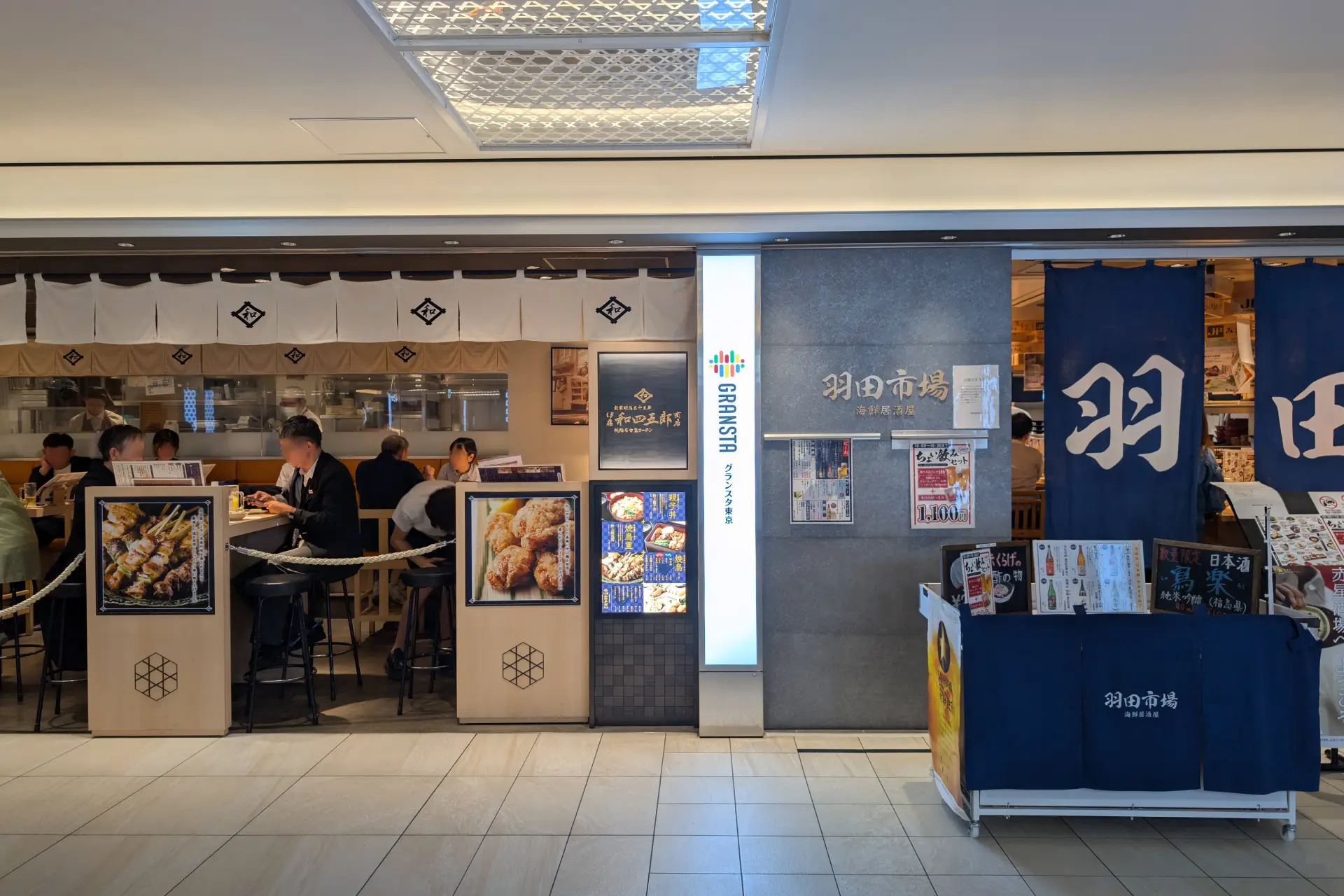
GRANSTA TOKYO occupies the areas around the Shinkansen platforms and caters specifically to Shinkansen travelers. The shops here specialize in premium ingredients, gourmet bento boxes, and artisanal products perfect for train journeys.
Bento Shops for Shinkansen Travelers
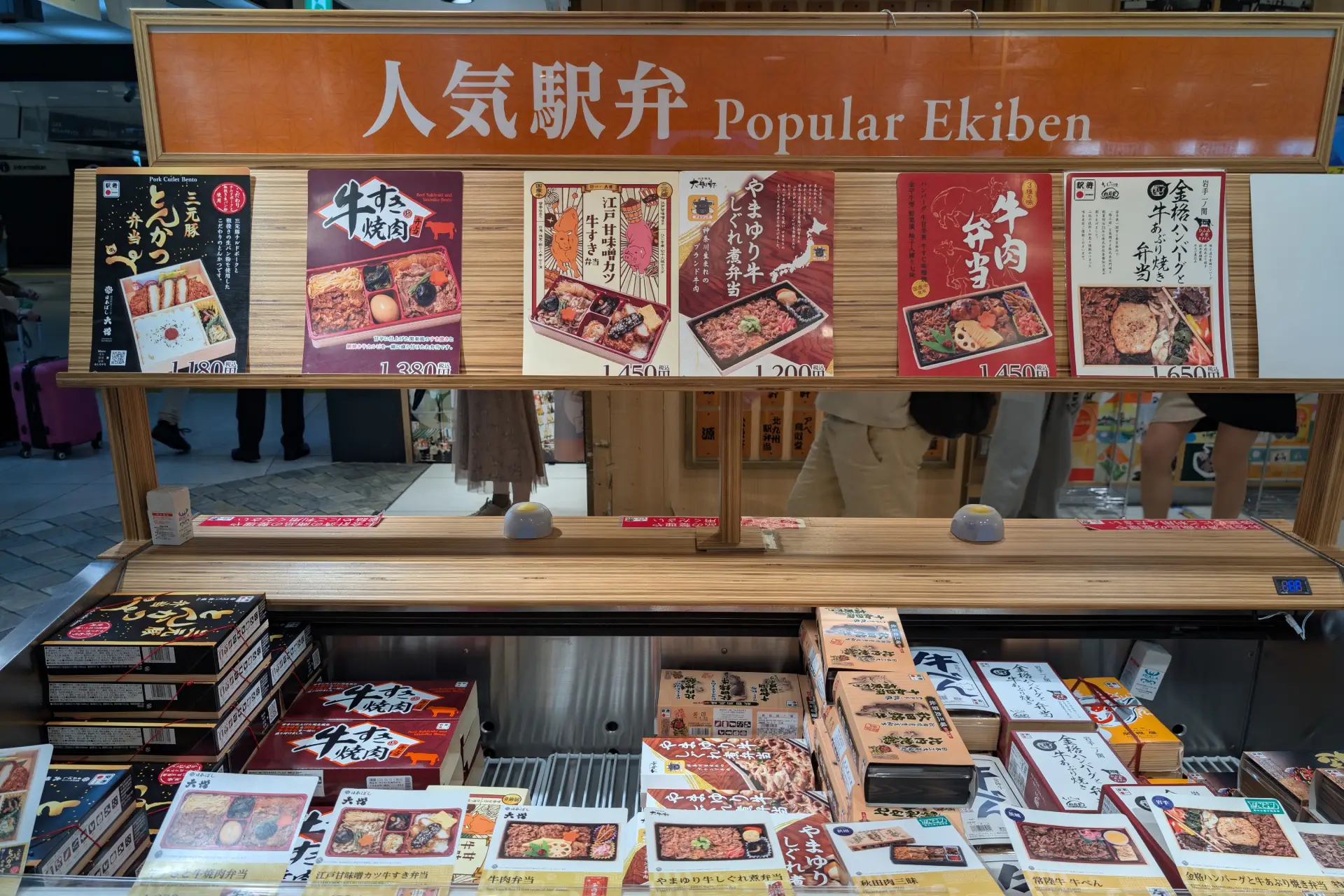
Traditional ekiben (station bento boxes) represent one of Japan's most beloved travel traditions. Tokyo Station offers an incredible variety of bento boxes featuring regional specialties from across the country.
Where to Shop at Tokyo Station
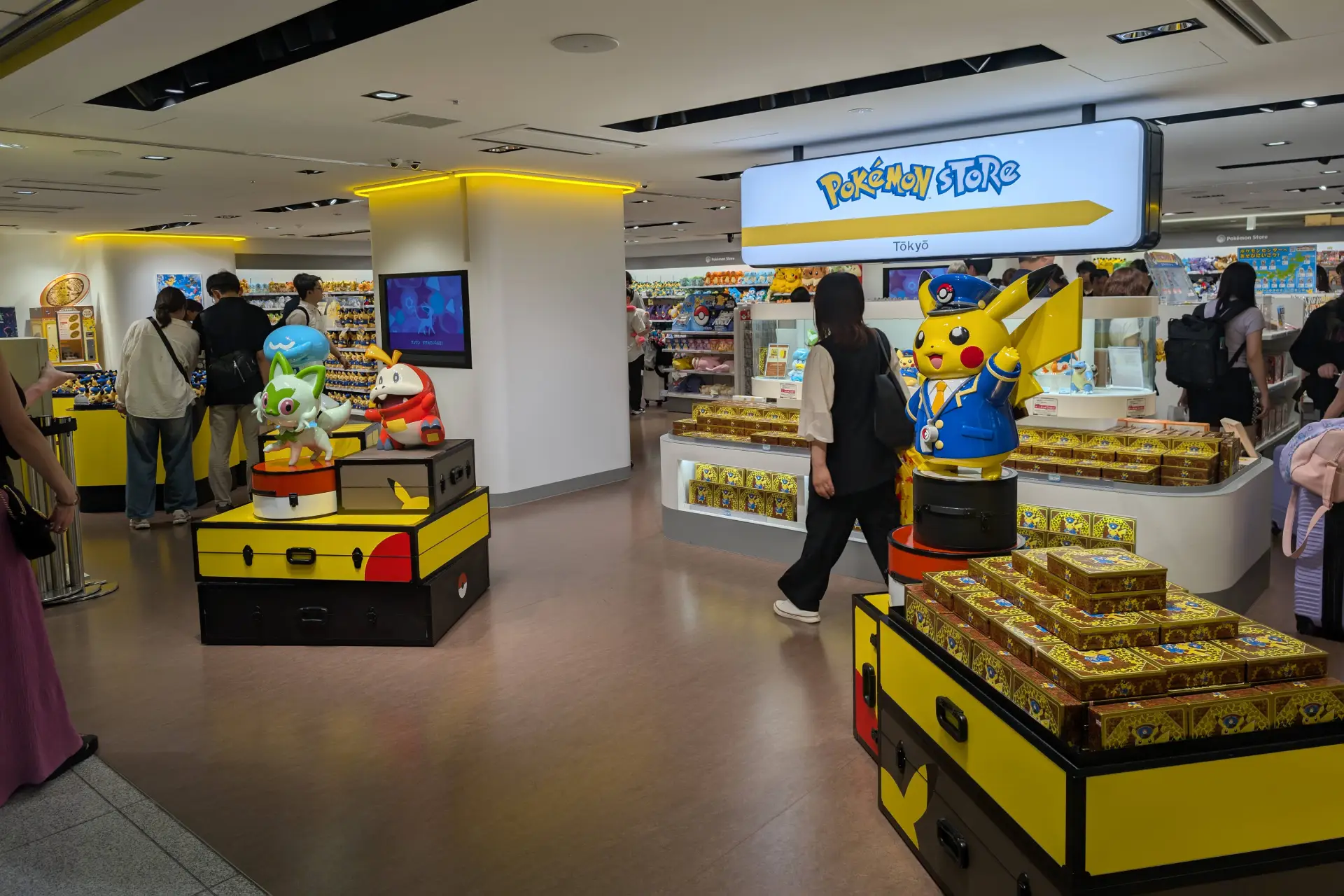
Shopping at Tokyo Station offers delightful surprises beyond typical souvenir hunting, with unique items and experiences you won't find elsewhere.
Character Street: Pokémon, LEGO, Chiikawa & More
Tokyo Station’s Character Street is home to shops featuring Japan’s most popular characters.
At the Pokémon Store, you can find special items only available at Tokyo Station. The LEGO Store offers Japan-only sets and fun building activities.
Chiikawa goods are also very popular. The Chiikawa Land shop on Character Street has a great selection, including limited-edition products loved by kids and adults alike.
You’ll also find shops for Hello Kitty, Rilakkuma, and many anime characters. Each shop offers Tokyo Station-only items that are perfect to take home as souvenirs from your trip.
UNIQLO
The UNIQLO store at Tokyo Station stocks travel-friendly essentials like packable down jackets, moisture-wicking underwear, and compact umbrellas—perfect for your journey ahead.
This location occasionally features exclusive items and special collaborations, often tied to seasonal campaigns or travel themes. While these may not be available year-round, they highlight the brand’s blend of practical Japanese innovation and stylish design.
Unique Japanese Gifts at Tokyo Station
For authentic Japanese souvenirs, explore the specialty shops within Ichibangai. These carefully curated stores showcase regional crafts, foods, and cultural treasures from across Japan, letting you discover the country's diverse heritage without leaving the station.
Nearby Attractions & Sightseeing
Tokyo Station's central location makes it an ideal starting point for exploring some of Tokyo's most iconic attractions.
Imperial Palace and East Gardens
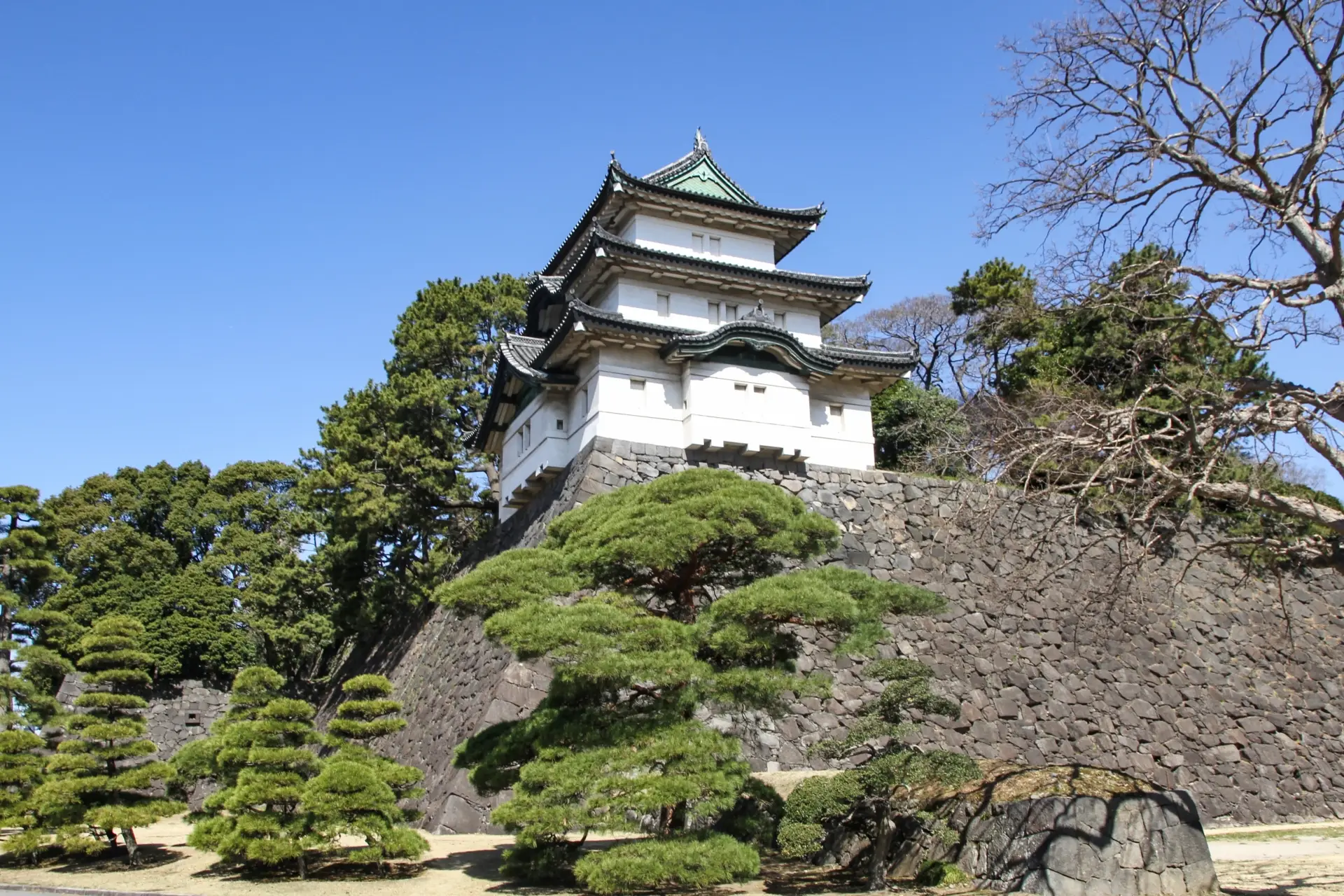
Just a short walk from the Marunouchi entrance, the Imperial Palace East Gardens offer a peaceful escape from the city's bustle. These beautifully maintained gardens showcase traditional Japanese landscaping and seasonal flowers. The gardens are free to enter and provide excellent photo opportunities with views of the palace grounds.
Marunouchi Business District
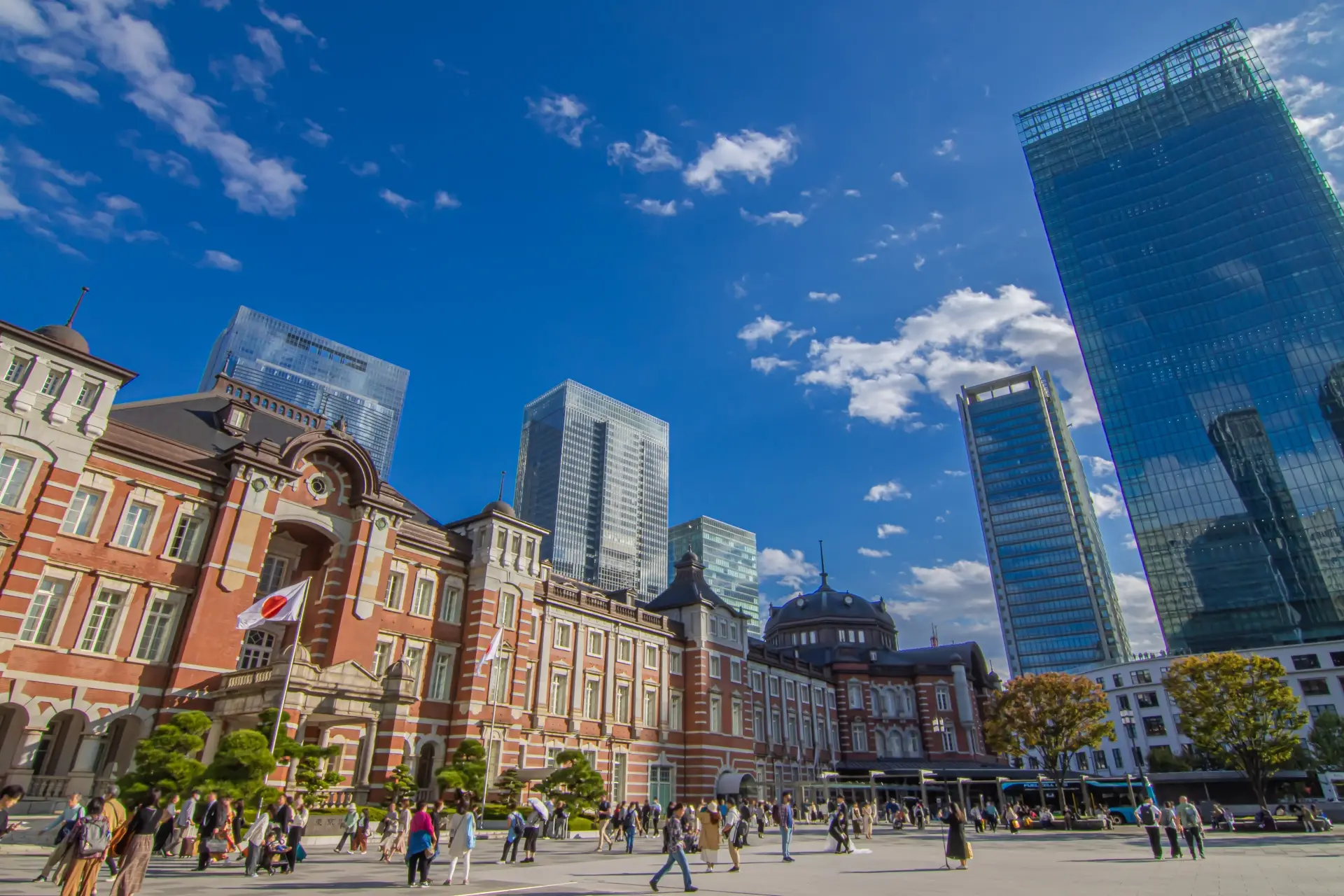
The modern Marunouchi area surrounding Tokyo Station features impressive architecture, upscale shopping, and fine dining. The contrast between the historic red-brick station building and surrounding skyscrapers creates a uniquely Tokyo atmosphere perfect for exploration.
Ginza Shopping District
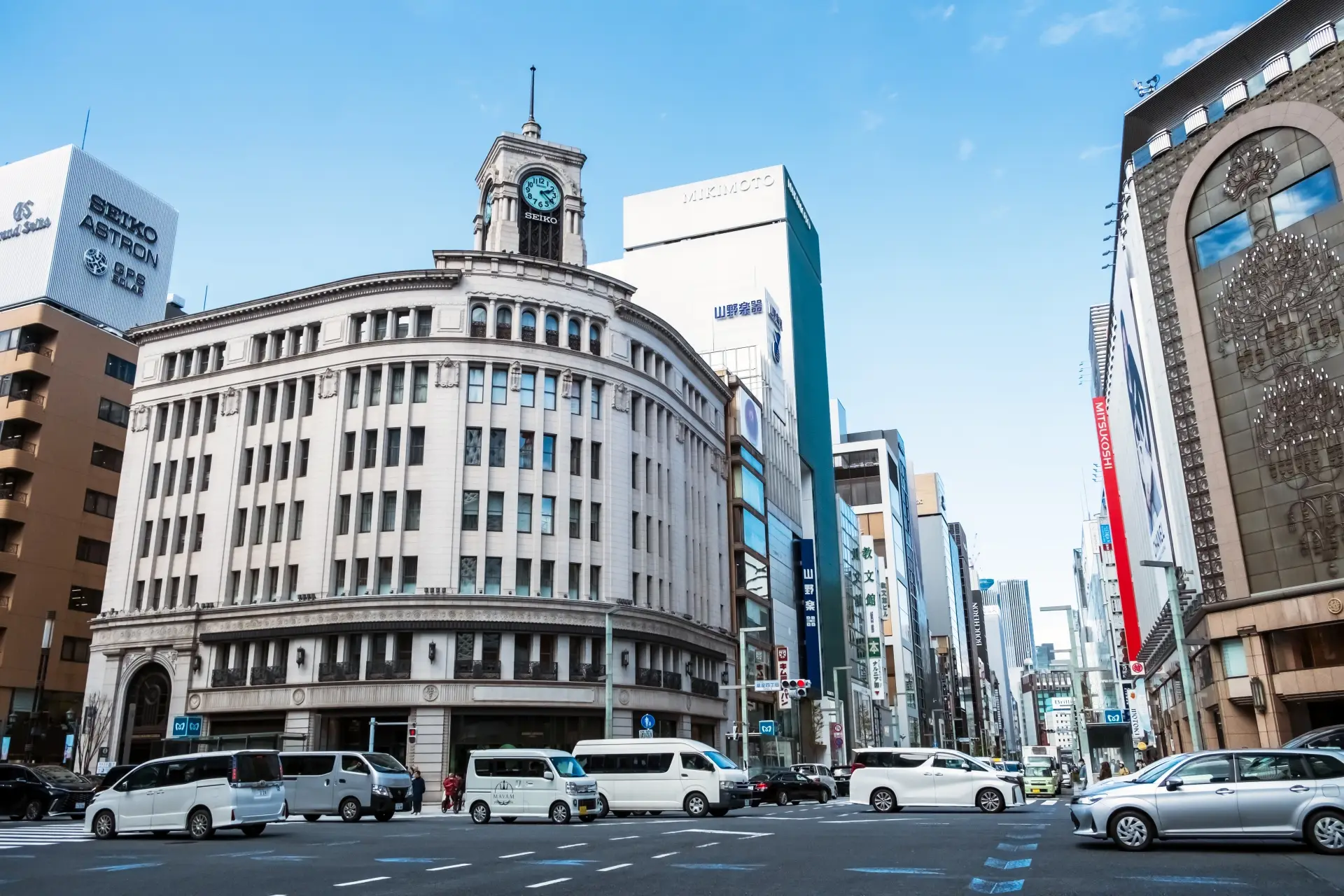
A 10-minute walk or short train ride brings you to Ginza, Tokyo's premier shopping and entertainment district. This area features luxury boutiques, department stores, art galleries, and some of Japan's finest restaurants, making it perfect for a sophisticated Tokyo experience.
National Museum of Modern Art, Tokyo

Japan’s first national art museum, this institution features a rich collection of modern and contemporary Japanese artworks. Located near Kitanomaru Park, it’s about a 10-minute walk from Tokyo Station and offers a calm, cultural break from the city bustle.
Nihonbashi Area
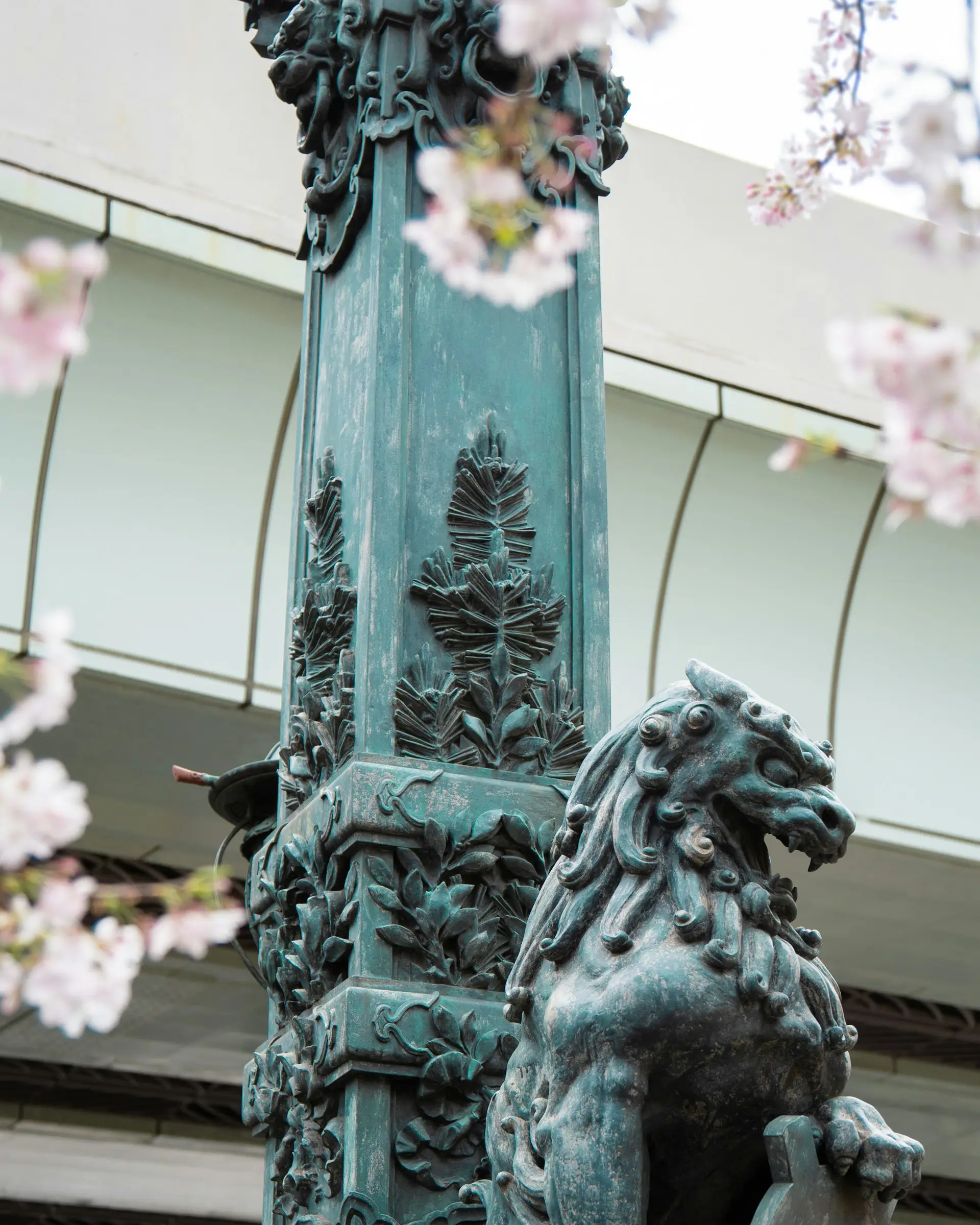
A historic commercial district just a short walk or subway ride from Tokyo Station, Nihonbashi is home to traditional craft shops, elegant department stores like Mitsukoshi and Takashimaya, and architectural landmarks including the symbolic Kirin Statue Bridge. It offers a blend of Edo-period history and modern refinement.
Akihabara
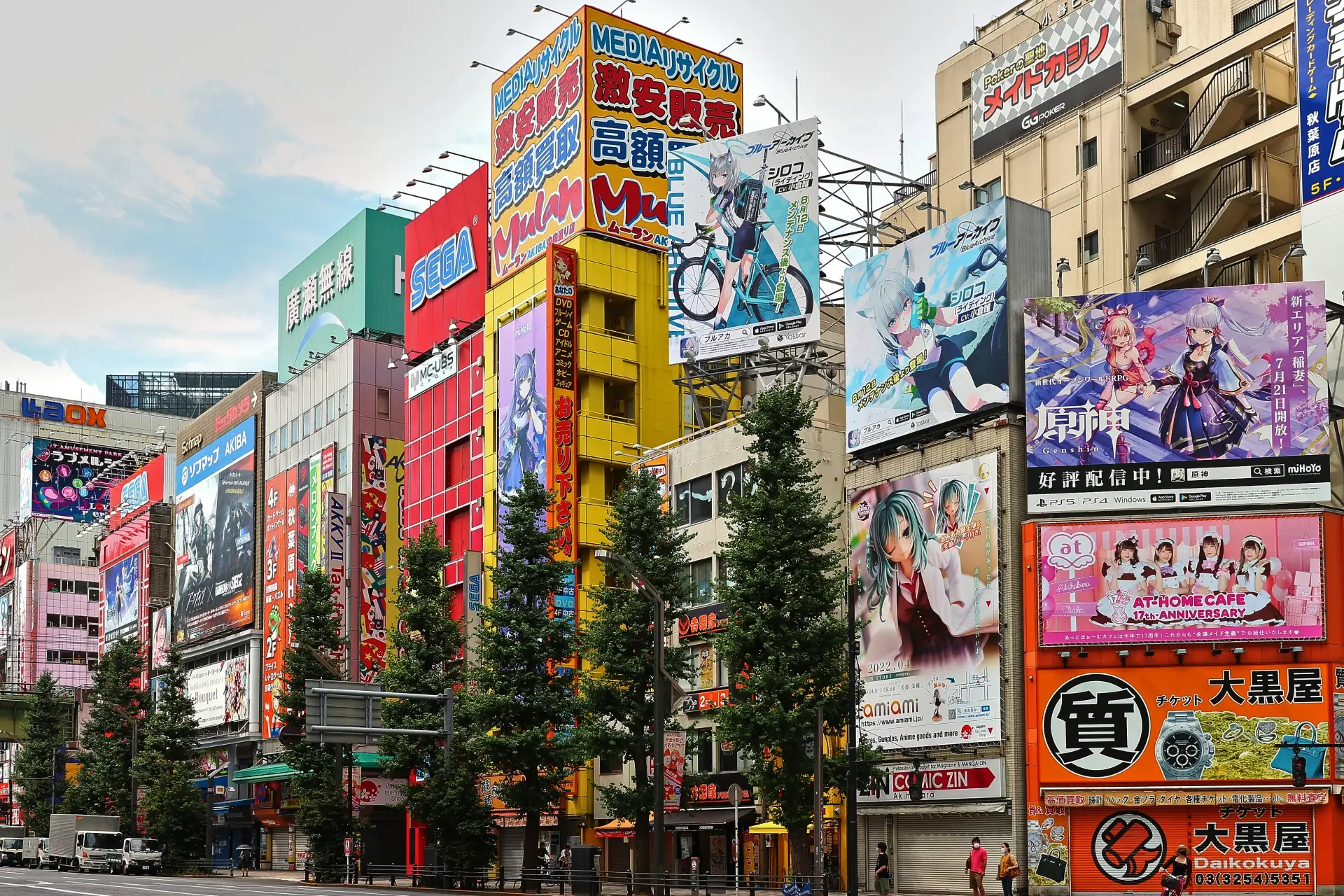
Just five minutes from Tokyo Station by JR Yamanote or Keihin-Tohoku Line, Akihabara is world-famous for electronics, anime, and gaming culture. Packed with tax-free stores, themed cafes, and subculture hotspots, it’s an unmissable destination for tech lovers and pop culture enthusiasts.
Plan Your Visit
Tokyo Station serves as your gateway to Japan's incredible diversity and efficiency. Whether you're catching your first Shinkansen to Kyoto or Osaka, or exploring Tokyo's neighborhoods, this central hub has everything you need for smooth travels.
The Yaesu side offers the most convenient access to Shinkansen platforms, while the Marunouchi side connects to the Imperial Palace area. Allow time to explore the station's extensive underground shopping and dining complex beyond just catching your train.
Ready to experience Japan's legendary Tokyo Station Shinkansen services? Japan Bullet Train makes booking simple with multilingual support and an easy QR code system designed for international travelers. Start your unforgettable Japanese journey right here at Tokyo Station.

